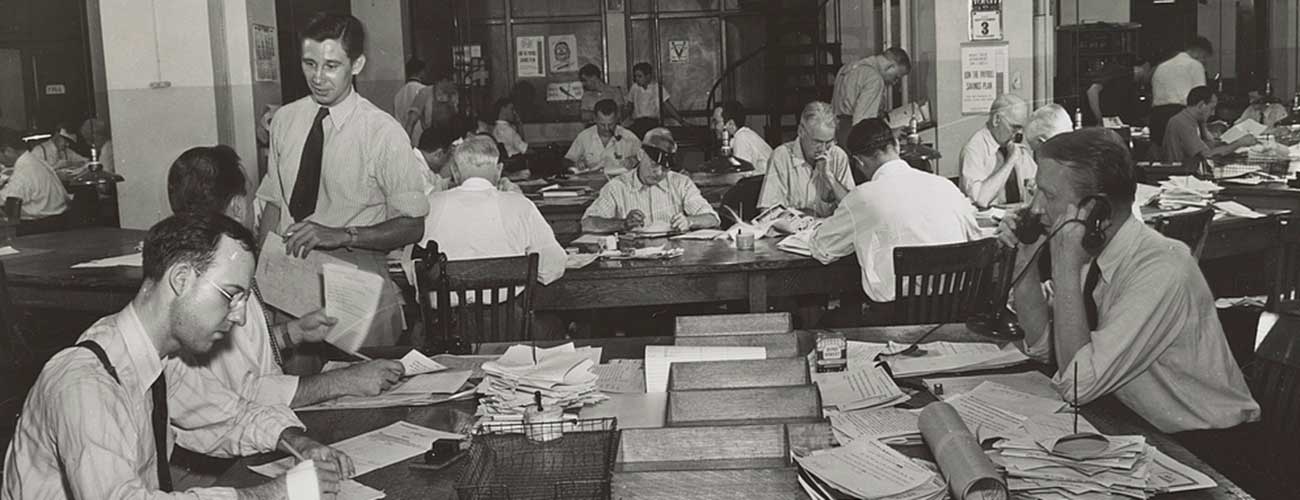When you work for The New York Times, you become immersed in its history and its fabled writing and writers. You connect to the Pulitzer Prizes, to the war correspondents, to the drama critics. And, of course, to the urban legends.
In my 44 years at the Times, I discovered a host of newsroom myths, virtually all of them riffing off the paper’s perceived pomposity.
There was the story from the ’60s of a particular fellow in the paper’s sports department who clearly wasn’t like everyone else. He had a certain savoir faire, a mustache reminiscent of a 1930s movie dandy, and he used expressions like “What the deuce!” and “Gracious!” What the heck was he doing in the down-and-dirty sports department?
Here’s what I was told. He had been one of the editors on the “picture desk”—the spot where captions were written. One day he wrote the following under a photo:
“Mrs. John Jacob Astor, left, and her prize geranium.”
Well, since there were no other humans in the photo, who else would that be but Mrs. A? Identifying her as being on the left….So, he got demoted to sports.
I mentioned this story recently to a former colleague and I was told, no, it was not Mrs. Astor. It wasn’t even a geranium. My colleague insisted the mustachioed fellow had written “Mrs. Roosevelt, left, and her prize ginkgo.”
And then still another old-timer chimed in: It wasn’t a flower. But it was a society matron, left, and her horse.
I checked the files. No, nothing like that, for any lady, had ever been published in the Times, as far as I could find. I also couldn’t find anyone who claimed to have actually seen the offending caption. The story is probably baloney. Still, the sports desk was supposedly where people would be sent if they screwed up. Like the editor who airbrushed out a dog’s private parts. When the paper was delivered to the newsroom, another editor remarked, “We never alter photographs.” And so the dog became whole again in the next edition and the editor was sent to the rear of the third floor.
What about other newspapers?
Here’s one I heard long ago about Newsday, the Long Island paper. It was a piece about an ambidextrous high school pitcher, and the headline read:
“Scholastic Hurler Can Relieve Self With Either Hand.”
I called a Newsday operative to check out the tall tale and was told: “Yeah, we heard it. Everyone has. It’s a company joke.”
Speaking of Long Island, an editor who worked for the defunct Long Island Press claimed his paper always tried to have the local angle in its stories, and so proudly displayed this lead, following a lunar eclipse:
“The moon, which can be seen over Long Island…”
Returning to the Times, we all know it adores the honorific “Mr.” You have to be pretty bad—I mean, very bad—not to be called “Mr.” Even some mobsters are endowed with the title (“The charges against Mr. Gotti, who is known as Junior…” ran one sentence). John Dillinger, the 1930s serial bad guy, was one of the few unlucky ones; he was just “Dillinger” when he croaked.
Tied to this tradition is a particularly amusing tale about a noted musical star. Many of my colleagues cited a 1973 review of the singer Meat Loaf (the “Bat Out of Hell” guy). According to Times lore, in a second reference, the reviewer described him as “Mr. Loaf.”
And Meat Loaf himself (real name: Marvin Lee Aday) in an interview once claimed that Clive Barnes, the drama critic, referred to him as “Mr. Loaf.” Sorry, Meat. It’s apocryphal. Actually, the term “Mr. Loaf” was used, but only satirically, in an internal memo poking fun at the institution.
The Times has always taken itself very seriously, as well it should. It gets cited by rival publications all over the world, and by various elements of the news media and publishing industry. So this next story could have actually happened. It was at a meeting of United Nations correspondents, and A.M. Rosenthal, then a young reporter and not yet the legendary Times executive editor, was among the throng. Supposedly, all of the reporters took off their jackets and began schmoozing. Someone asked Rosenthal why he kept his on:
“New York Times reporters always keep their jackets on,” was Rosenthal’s reply.
The connotation of class has always been among the reasons the Times attracts high-end advertisers. One of my favorite (possibly apocryphal) stories involves the advertising department, in a roundabout way. The Daily News, the story goes, wanted to get some of the Saks Fifth Avenue advertising revenue that was always going to the Times. One of the News ad people called the Saks people hoping to get some of that money.
He was turned down, with this explanation: “Your readers,” sniffed the Saks Fifth Avenue guy, “are our shoplifters.”
Gerald Eskenazi produced 8,000 bylines in more than 40 years with The New York Times , in addition to writing 16 books. He now lectures on sports and the news media.

